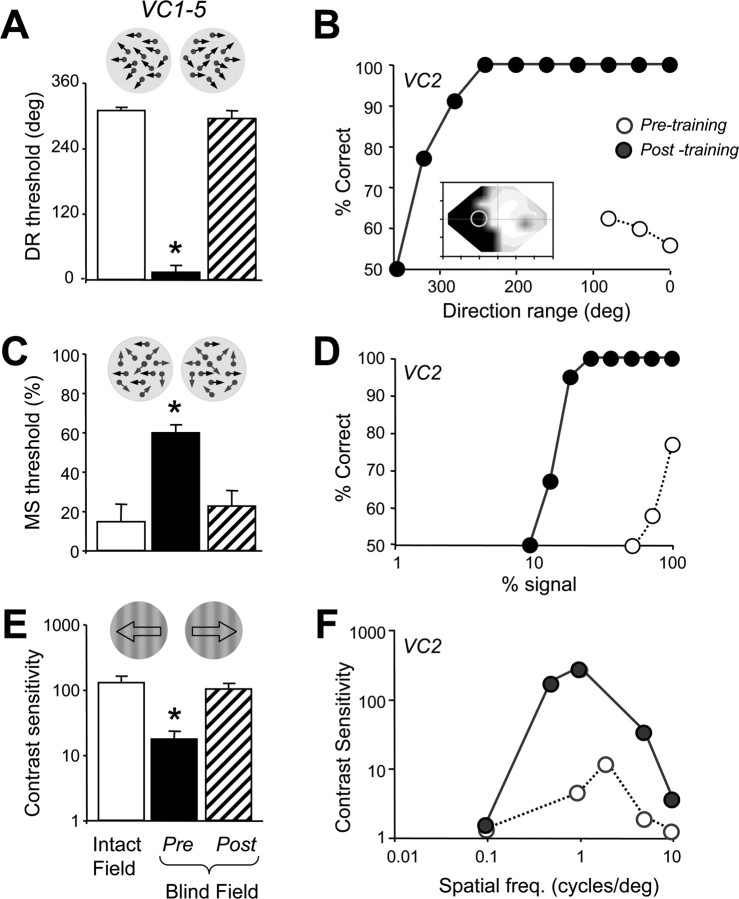Figure 2.
Global motion discrimination training improves contrast sensitivity and the extraction of motion signal from noise. A, Histogram illustrating how global direction discrimination training returns direction range (DR) thresholds to normal (relative to those in the intact hemifield; p = 0.127, paired Student's t test) at the retrained blind field locations in VC1–VC5. B, Sample psychometric function for VC2 performing a left–right, global direction discrimination task in her blind field (see location circled in the Humphrey visual field map inset). Before training (open circles), percentage correct performance hovered just above chance at the lowest direction range levels. After training (filled circles), performance improved dramatically and a normal psychometric function was attained for this task. C, Histogram illustrating the positive effect of global direction discrimination training on motion signal (MS) thresholds in the blind field of VC1–VC5. Training on random-dot stimuli with a large range of dot directions (not motion signal) recovered the subjects' ability to extract motion signal from random directional noise at the trained locations. After training, motion signal thresholds were not significantly different (p = 0.759, paired Student's t test) from those in the intact hemified (white column). D, Sample psychometric function for VC2 discriminating the left–right direction of motion of random-dot stimuli in her blind field (see location circled in the Humphrey visual field map inset in B). The percentage of noise dots was varied throughout the session, but, before training (open circles), only stimuli with 100% signal dots could be discriminated at a 75% correct level. After training on direction range thresholds, however, performance and the psychometric function returned to normal (filled circles). E, Histogram illustrating the effect global direction discrimination training using random dots (of set contrast) on contrast sensitivity for left–right direction discrimination of luminance-modulated, drifting sine-wave gratings (spatial frequency, 0.5 or 1 cycle°; temporal frequency, 10 Hz). Training with random dots significantly improved contrast sensitivity at the retrained, blind field locations (p = 0.405, paired Student's t test, relative to equivalent locations in the intact hemifields). F, Plot of contrast sensitivity versus spatial frequency for VC2 before (open circles) and after (filled circles) training with random-dot stimuli at the location indicated in B. Temporal frequency was held at 10 Hz. Global direction discrimination training significantly improved contrast sensitivity at the trained, blind field location, with the greatest improvements occurring between 0.5 and 2 cycles°. All data in the histograms are expressed as means and SEM. *p < 0.05, paired Student's t tests relative to intact hemifield values. Deg., Degree; freq., frequency.

